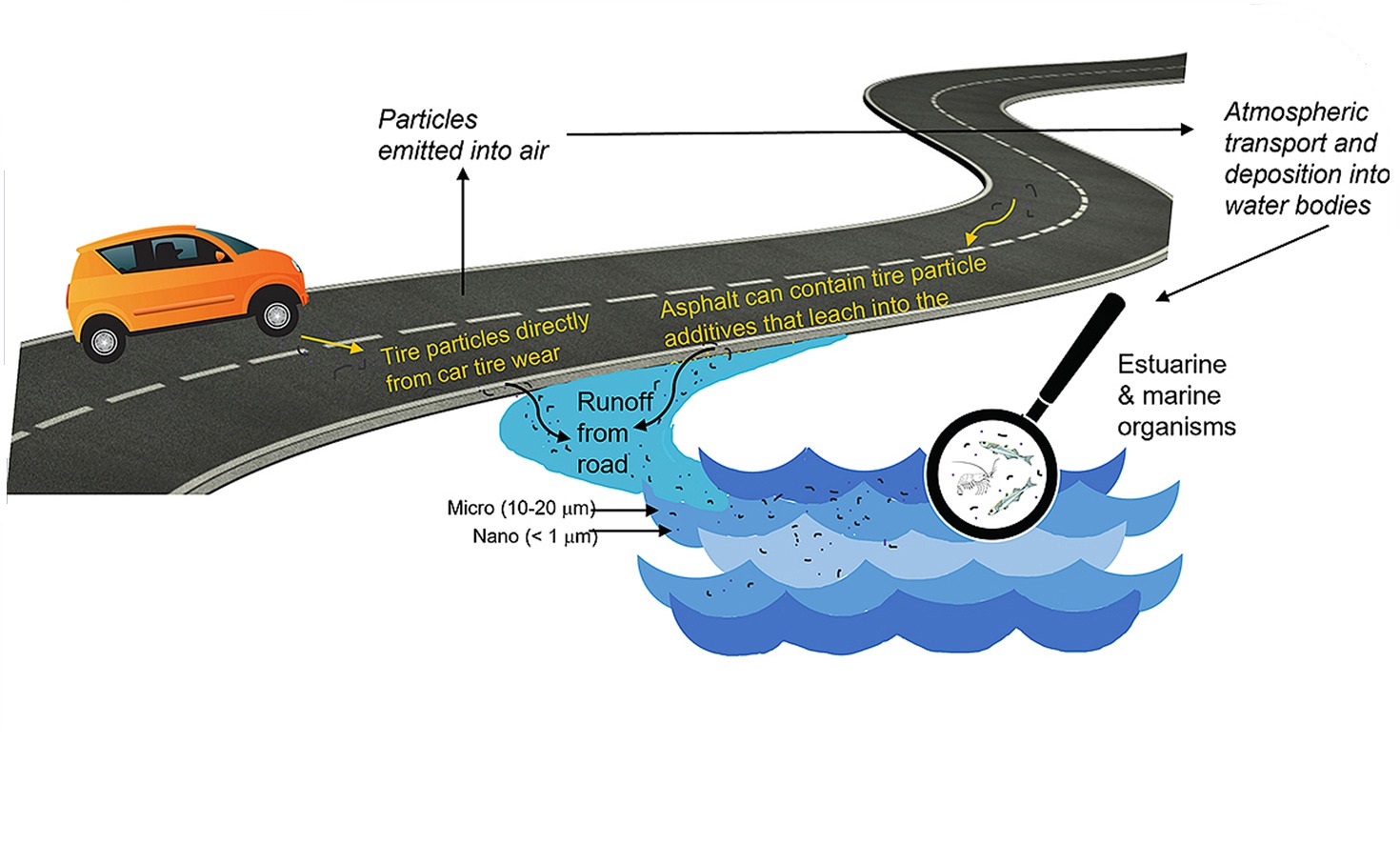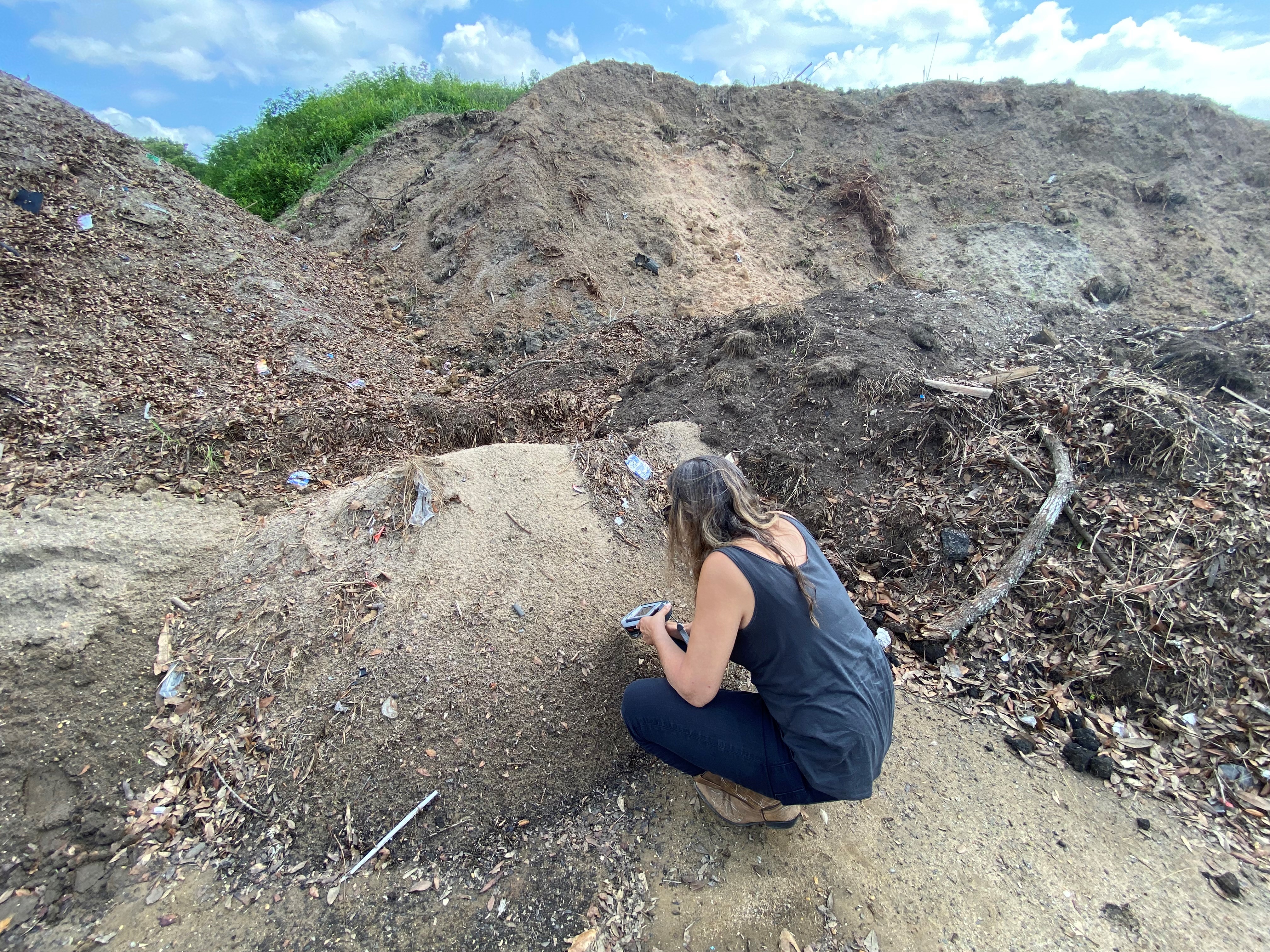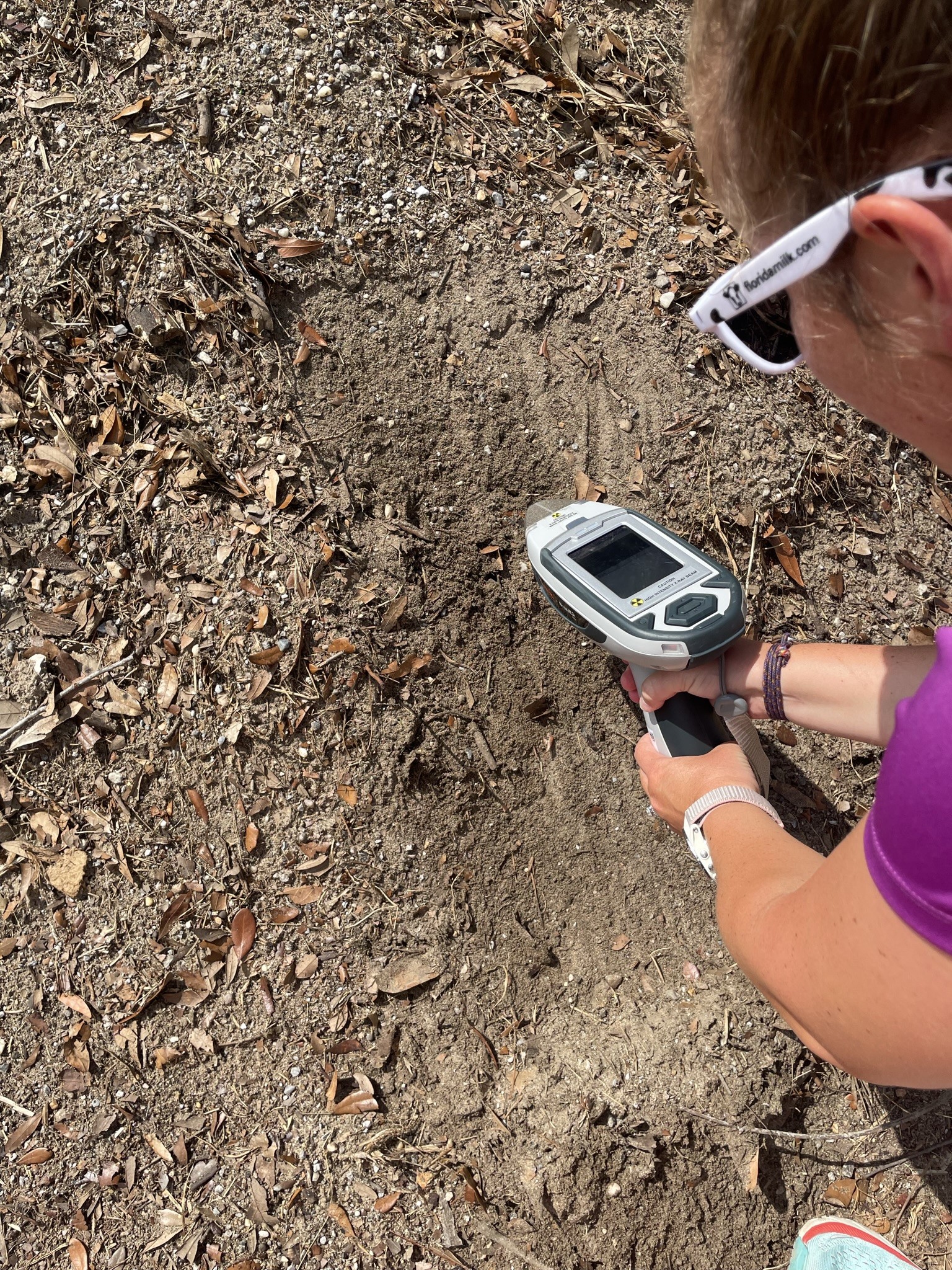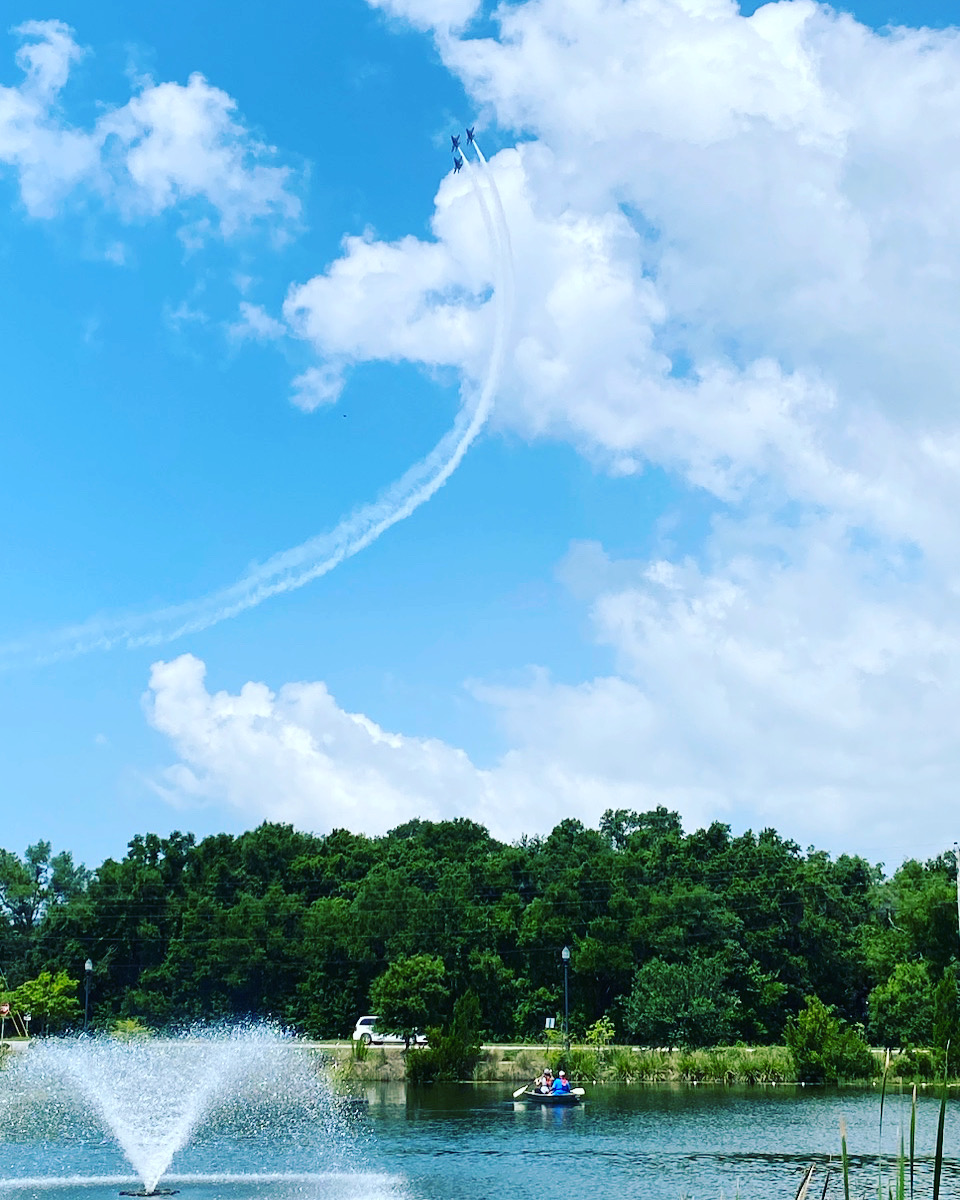

Guest Article: Dr. Nicole Deycard, EPA
Cover Image: EPA scientist Dr. Nicole Deycard conducts field qualitative inorganic analysis of road dust from Escambia County (Fla.) street sweepers to develop a composite Reference Material that can be used by researchers across the U.S. studying roadway and tire pollution.
Tires can generate a complex array of pollutants through multiple phases of wear (whole tires, micro-particles, and chemical elements), each with associated health and environmental risks. Most eco-conscious drivers are focused on automobile emissions but may not give their tires a second thought. Every time a car brakes, accelerates, or changes direction, friction wears down the exterior of the tire, sending particles into the environment. Some remain suspended in the air, and others are transported through rainfall into local waterways, where they can have adverse effects on plant and animal life. Tires are also known to be one of the largest sources of microplastic pollution in the ocean.
Unfortunately, it can be difficult to calculate not only how much tire material is being released into the environment, but also the potential impacts that road and tire wear particles have on estuarine and marine ecosystems. Due to the many factors influencing tire wear it can become challenging for researchers to fully understand the impact of these pollutants.

Subsequently, researchers throughout the world are currently turning their attention to answering these questions with methods that can be compared, validated, and standardized. Reference Materials (RM), a chemical measurement standard, play a critical role in assessing accuracy and comparability of lab results among different laboratories and over time where new scientific methods are being developed for use. The demand for new RMs of higher quality is increasing because of both the improved precision of measurement equipment and the requirement for more accurate, reliable data. Sometimes, the need for new RMs stems from the need to develop greater understanding about emerging contaminants that have not been extensively studied in the past. This is the case with contaminants found in road dust and tire wear particles (TWPs) in stormwater runoff.

EPA scientist Dr. Nicole Deycard conducts field qualitative inorganic analysis of road dust from Escambia County (Fla.) street sweepers to develop a composite Reference Material that can be used by researchers across the U.S. studying roadway and tire pollution.
To study this issue, scientists in EPA’s Gulf Breeze, Fla. research lab are working with Escambia County and the City of Pensacola to gather road dust from streetsweepers to develop an RM that can be used and shared among researchers throughout the country. Local street sweepers collect road dust and particles throughout the county and bring them to local dumping sites, where EPA scientists carefully select composite samples using real-time analytical instrumentation to approximate concentrations of metals associated with tire wear particles.

ORAU contractor Ashley Boshinski conducts field qualitative inorganic analysis of road dust from Escambia County (Fla.) street sweepers to develop a composite Reference Material that can be used by researchers across the U.S. studying roadway and tire pollution.
The carefully collected road dust is then mixed to produce a composite sample that is taken back to EPA’s Gulf Breeze lab to be rigorously tested for a suite of analytical parameters including metals and other tire associated chemicals. The Reference Material developed from this research will be shared with labs throughout the county and compared with results from collaborative labs throughout EPA.
EPA also plans to sample stormwater and sediments from retention ponds for tire wear particles and associated pollutants to understand their fate and transport. These data will be incorporated into models that can then provide information to aid in long-term sustainable management of stormwater solutions in Pensacola and beyond. As we seek to better understand the effects of these TWPs, and ways to minimize their impact through stormwater and retention pond improvements, citizens can help by employing some commonsense solutions to minimize the generation of TWPs—drive less aggressively, carpooling, combine trips, etc.

EPA scientist Dr. Nicole Deycard and Alex Almario at Bill Gregory Park Stormwater Treatment Retention pond.